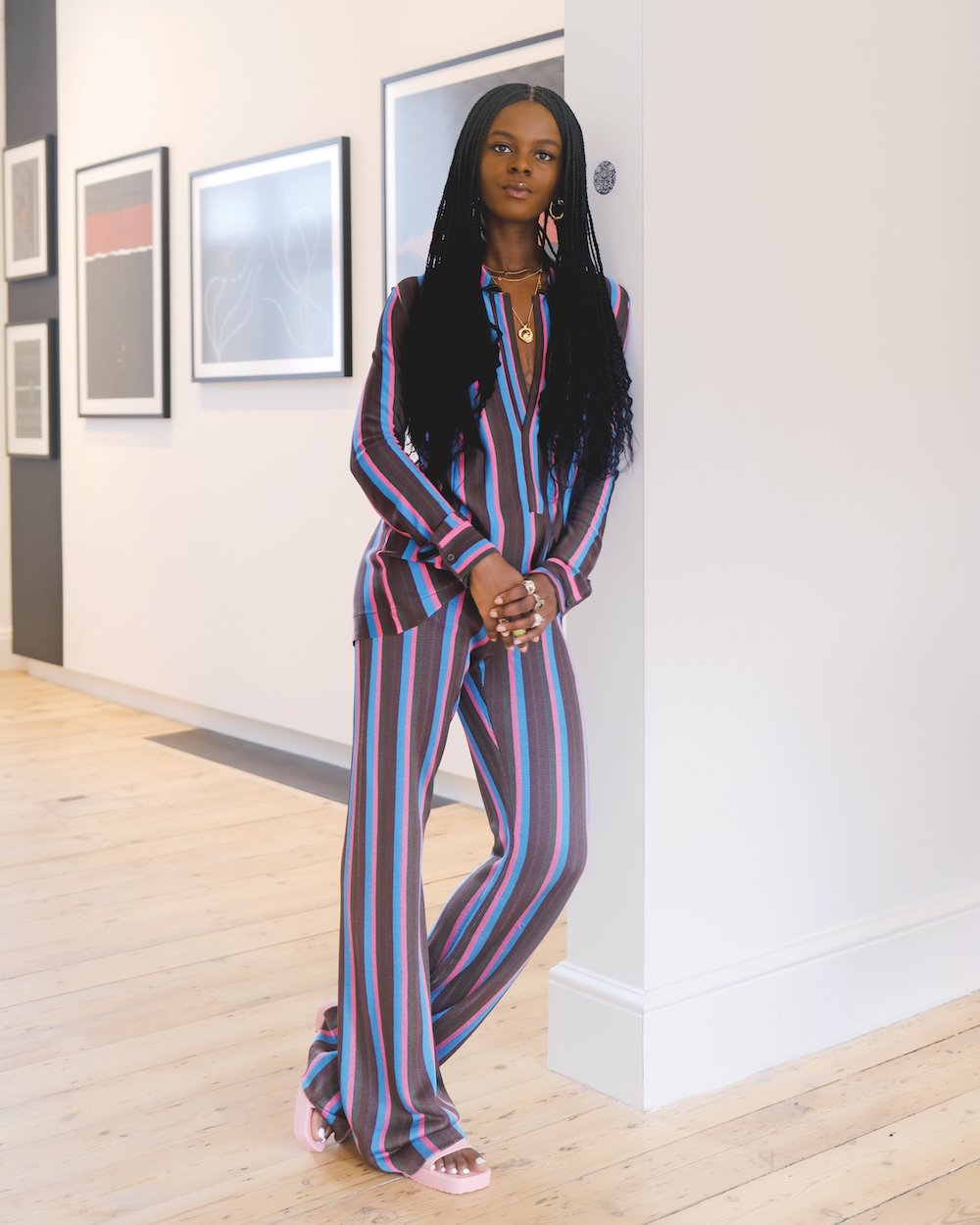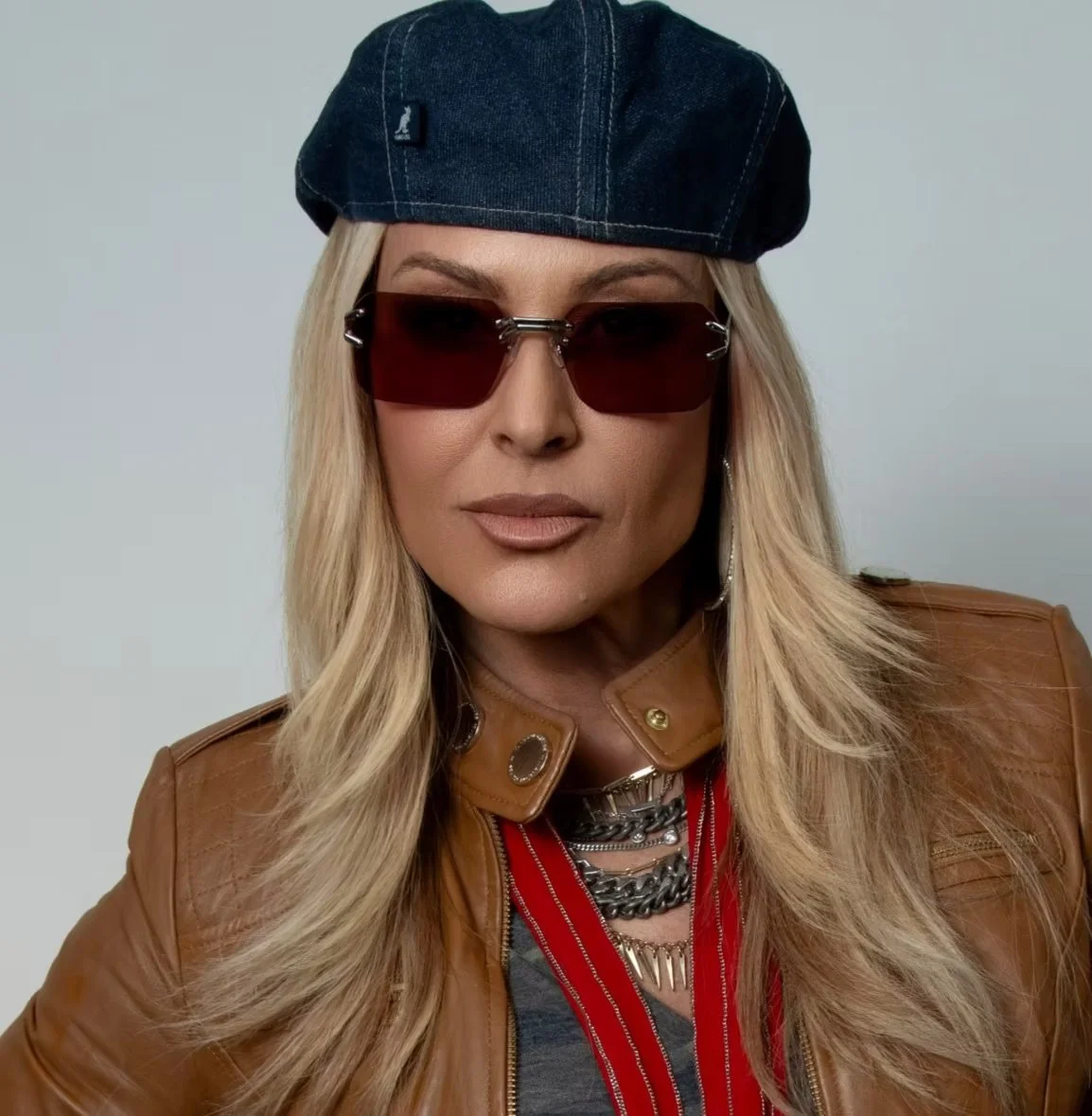This Gallerist Isn’t Waiting for the Art World to Change
Courtesy of Dada
Oyinkansola Dada
This Gallerist Isn’t Waiting for the Art World to Change
By Bonnie Langedijk
When we talk about the global $68 billion art market, the biggest art capitals – New York, London and Paris – remain the focal point. Our westernized lens on art often leaves us with a one-sided perspective, disregarding the artists and galleries that don’t fit into the traditional blueprint. While most galleries and art institutions hold onto what they know, new players are creating initiatives and networks outside of the establishment. One of the women spearheading this changing art world is Gallerist Oyinkansola Dada. Since launching her namesake Dada Gallery, she has quickly built a reputation for introducing the most exciting artists from Africa and its diaspora to international audiences. Spending her time between Lagos and London, the gallerist is fully immersed in two markets, giving her a unique perspective on what’s actually happening across the art world. Over the past few years, Dada has created a platform for emerging artists to be seen regardless of their geographical location. To expand and further share her vision beyond the art world, Dada launched annual publication Dada Magazine last year, amplifying the voices of Black artists from across the globe.
We spoke with the pioneering gallerist about her career, the digital vs. physical art experience and the issues with the traditional art market.
Courtesy of DADA Magazine
Courtesy of Dada Gallery
Bonnie: How did you end up in art?
Oyinkansola: I was studying politics and I had always wanted to connect to culture. In secondary school I spent a lot of my time in art class. I started by visiting exhibitions, figuring out things that were happening around me that I was interested in culture-wise. A lot of it came from the books that I was reading as well, pertaining to identity. Especially being in London and having lived in Nigeria my whole life, it was an interesting experience to be in a different space and to try and understand your identity as it pertains to a new environment. After studying, I took a year off and I moved back to Lagos and worked at an art fair. That was when I really started putting on exhibitions. But prior to that I already had a blog where I was speaking about the books I was reading, the exhibitions I was going to and the artists that I enjoyed. When I moved back to London, I started working with the artists and applied to an art fair, and that was how it developed into a gallery. I didn't set out to create a gallery. I sort of fell into it as a natural progression.
What do you think has been the biggest challenge in terms of translating your digital presence into physical spaces?
Oyinkansola: I think the challenges are more the other way around, translating physical to digital. Digital was great when we weren't selling art up to a certain price bracket. But as the profiles of the artists that we were working with grew, the more expensive the art became, the harder it became to sell it digitally. That was a bit of a problem. Post pandemic when people started visiting exhibitions more, there was a slowdown in the digital activity. People wanted to see it in person again. The ideal vision is to have a balance of both.
“As the profiles of the ARTISTS that we were working with grew, the more expensive the art became, the harder it became to sell it digitally.”
Since you’ve expanded in terms of the kind of artists you represent, especially when it comes to price point, have you seen a new type of buyer emerge?
Oyinkansola: What’s very interesting about the art market is that when you're doing things in a very open, accessible way, it’s for everyone. As you start to represent artists that are more expensive, you need to get the attention of the art market itself. The stakes become higher because you're trying to grow the artist's career. The group of people who are paying attention becomes more specialized and niche. You have to do the groundwork of connecting with those people and actively participate in the art market.
That’s interesting. Many people I’ve spoken to who work in the art market talk about how digitization can bring democratization. From an outsider’s perspective it seems that to be taken seriously you somehow have to play the game, or at least connect to the right people.
Oyinkansola: Definitely. There's a reason why the carbon footprint of people in the art market is excessive. You have to go to every art fair, every opening across the world to be seen as somebody that’s participating. It does become a very condensed, niche group of people.
Courtesy of Dada Gallery
As a gallerist you focus on amplifying the voices of young artists. In this robust art world, what are you hoping to change?
Oyinkansola: I'm trying to create a level playing field for Black artists across the world. Currently, you're not truly a part of [the art world] unless you're in New York or London. I want to create a platform where it doesn't matter where you are, you can participate globally. I wasn’t born and raised in the UK. I know that there are so many incredible artists out there that are not given the time of day. That's why Dada includes both Black artists in the West and the ones living at home. Dada can be a platform to share their voice without them needing to travel and acquire their presence in these cities. We need to democratize the art world in this way. Obviously the art markets across Africa are also growing, but there's still a huge difference in the perception of success based on geography.
Of course. Some of the artists I've spoken with echo this sentiment. How do you manage your relationship with the artists you work with?
Oyinkansola: The business of art is one that's extremely emotional. You're not only trying to sell a painting, you're trying to sell someone's story. It's such a close relationship that if there's conflict, it will affect you on a daily basis. As galleries grow, they have different sales associates and directors that manage each of these relationships. But for me at this stage – having to manage all of it – can become a lot. That's why I tend to work with specific types of artists that align with my views.
Completely. I wanted to jump into your magazine that you launched last year. Why did you decide to translate your vision into a print publication?
Oyinkansola: The magazine is our permanent physical space, as we don’t have one right now. The Dada magazine is built on the ethos of the gallery. It's representing underrepresented voices in the art world, focused on Black artists. The approach is very pan-African. A magazine really broadens what we can cover. We're adding artists' interviews and essays written by artists. It also allows us to focus on non-traditional art forms that we wouldn't necessarily be able to cover in a commercially viable way if we had to keep the physical space running. To me, the magazine was a natural expansion of what we were doing in a way that’s accessible for people. After moving into becoming a full gallery and no longer selling art at certain price points, it became imperative that there was still a way for people to participate beyond just buying art. We’ve noticed that, when we have shows, a lot of young people tend to pick one up because they want to understand what's happening in this art world that we're in. It's a different way of engaging with people and our community. Telling more stories from the perspective of artists, contributors, anything related to our vision.
That’s great – to create a publication that brings together all elements of culture in a way that feels relatable and approachable. I want to zoom out a bit and talk about the art market at large. There’s so much going on in the art world, but what’s your take on where the art world is today?
Oyinkansola: Things changed a lot after the pandemic, but much of it has been reversed. When you say the art world, a lot of times we're speaking about an art world from a specific perspective. What helps to navigate it, is to create some sort of decentering of the certain thing. So it's no longer: oh, this is the art world and these are the rules everyone has to play by. Going back to what I said about how I feel like certain artists in different places are not seen as actual participants because they're not at certain things. A lot of the work that I'm trying to do is to center what it means to be participating and knowing that there are different centers of things, whether that’s in Lagos or somewhere else. If we try to blend into an art world that's been in existence for centuries and was never really made for people like us in the first place, it becomes so much more difficult. Sometimes there are changes, like in 2020 when there was a lot of uproar about centering more Black artists. But those things don't last very long. People often jump onto those moments because that's what they think is right at that moment but they don't necessarily uphold those values and ideals. The more Black galleries there are, the more representation of Black voices within the spaces. That's how we create a more equitable system for everyone. I don't know that I have the answers, but it's a rambling of different ideas that I have in relation to what I think our world is right now.
No, I think you're completely right. It's interesting the pandemic forced everyone to stay in their house, people were pulled out of their social circles. These bigger ecosystems couldn't meet in person. And it felt like it was a moment for everyone to really reflect on what's important. Since we've gone back to being in those ecosystems physically, we're also going back in terms of making change because people are going back to their old circumstances. There were so many good conversations and things were moving forward and it almost seems like we're moving backwards
Oyinkansola: Exactly. It’s about creating your own ecosystem. If we were left to have to take part in the art world the way people traditionally do, I don't think I would've been able to achieve what I have so far. Not being from an art background, having to apply for internships – you know how those processes can be sometimes. It would’ve just been me trying to fit into an institution that wasn't mine in the first place. I'm learning things in my own time, speaking to people about the experiences and doing research on what other galleries have done. It's taking the wheel and trying to figure it out on your own.
This interview has been edited and condensed for clarity.







